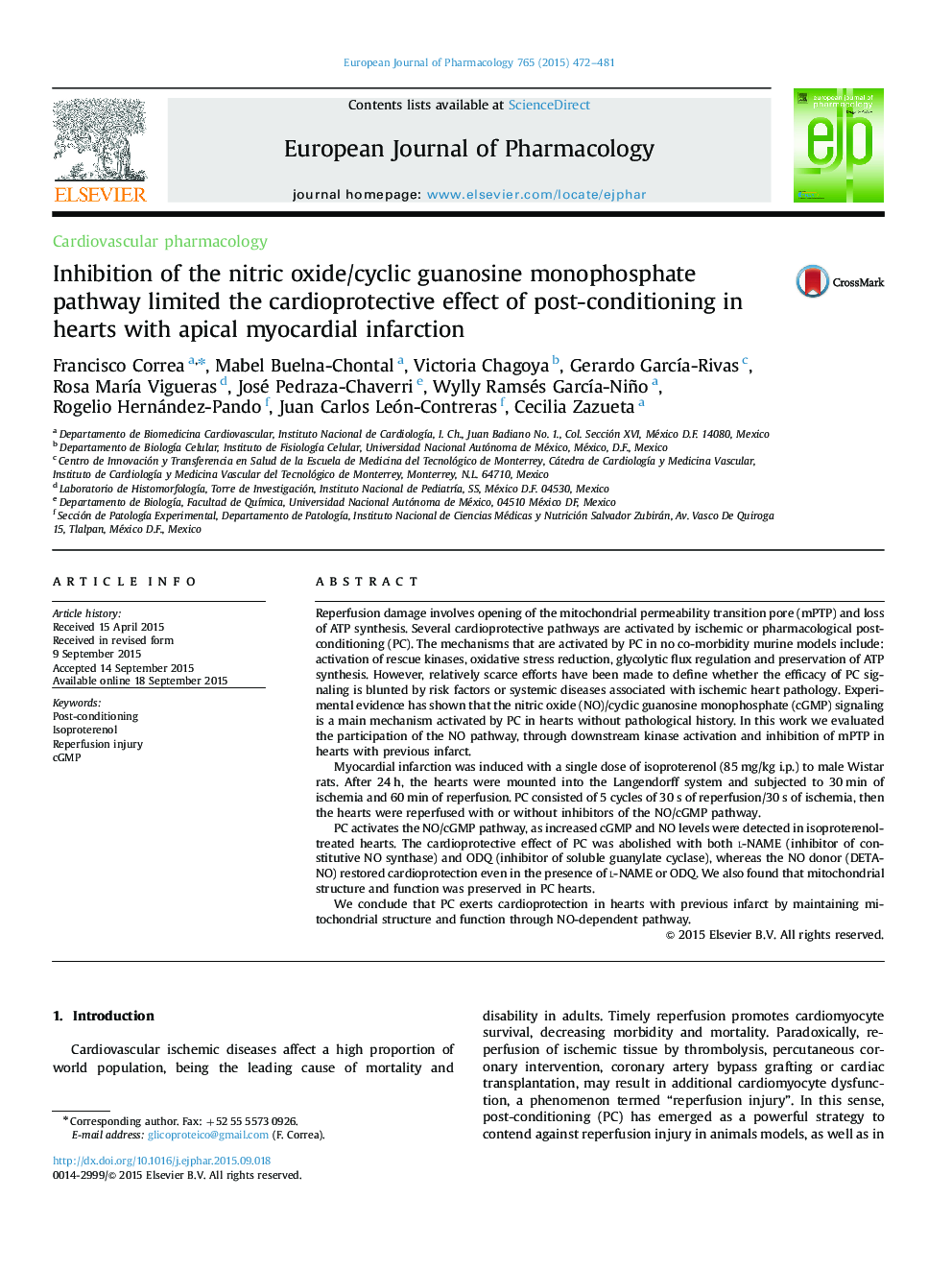| کد مقاله | کد نشریه | سال انتشار | مقاله انگلیسی | نسخه تمام متن |
|---|---|---|---|---|
| 5826945 | 1558915 | 2015 | 10 صفحه PDF | دانلود رایگان |
Reperfusion damage involves opening of the mitochondrial permeability transition pore (mPTP) and loss of ATP synthesis. Several cardioprotective pathways are activated by ischemic or pharmacological post-conditioning (PC). The mechanisms that are activated by PC in no co-morbidity murine models include: activation of rescue kinases, oxidative stress reduction, glycolytic flux regulation and preservation of ATP synthesis. However, relatively scarce efforts have been made to define whether the efficacy of PC signaling is blunted by risk factors or systemic diseases associated with ischemic heart pathology. Experimental evidence has shown that the nitric oxide (NO)/cyclic guanosine monophosphate (cGMP) signaling is a main mechanism activated by PC in hearts without pathological history. In this work we evaluated the participation of the NO pathway, through downstream kinase activation and inhibition of mPTP in hearts with previous infarct.Myocardial infarction was induced with a single dose of isoproterenol (85Â mg/kg i.p.) to male Wistar rats. After 24Â h, the hearts were mounted into the Langendorff system and subjected to 30Â min of ischemia and 60Â min of reperfusion. PC consisted of 5 cycles of 30Â s of reperfusion/30Â s of ischemia, then the hearts were reperfused with or without inhibitors of the NO/cGMP pathway.PC activates the NO/cGMP pathway, as increased cGMP and NO levels were detected in isoproterenol-treated hearts. The cardioprotective effect of PC was abolished with both l-NAME (inhibitor of constitutive NO synthase) and ODQ (inhibitor of soluble guanylate cyclase), whereas the NO donor (DETA-NO) restored cardioprotection even in the presence of l-NAME or ODQ. We also found that mitochondrial structure and function was preserved in PC hearts.We conclude that PC exerts cardioprotection in hearts with previous infarct by maintaining mitochondrial structure and function through NO-dependent pathway.
Journal: European Journal of Pharmacology - Volume 765, 15 October 2015, Pages 472-481
